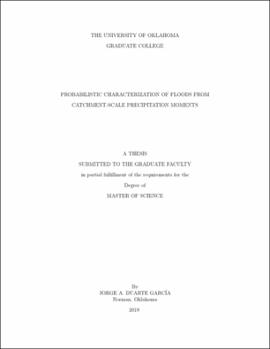| dc.description.abstract | Floods are one of the most devastating natural hazards across the world, accounting for roughly one third of all global geophysical hazards. The ability to predict and characterize floods is increasingly important, and in order to achieve effective flash flood characterization (due to their short lead times and distinct localization), the need to account for rainfall spatial variability arises.
Spatial precipitiation moments offer a concise yet resourceful set of abstractions, which condense and expose intrinsic geophysical interactions between rainfall and basin. By leveraging the richness of these dimensionless statistics, this research aims to construct supervised machine learning models which could offer a probabilistic characterization of flood conditions over gauged locations accross the Contigous United States (CONUS). These models are trained on a real, historical, event-based flood database, which contains precipitation moment data (pre-generated), as well as hydrological, morphological and bioclimatic information for each of the flooding events, and the basins over which they occurred.
Three different machine lerning techniques (MARS, Random Forest and Support Vec- tor Machines ) are used to characterize and explore three different aspects of floods: basin response time (lag time), flood stage threshold exceedance and the moment of relative peak discharge - a proposed indicator which describes the peak streamflow behavior of a stream with respect to the duration of the flooding event. Both classification and regression models are built for these responses using the same techniques. Variable im- portance analysis is also performed in order to determine the relevat factors that influence each of the modeled response. A probabilistic characterization of flood stage threshold exceedance is also achieved by extracting classification probabilities from these models, which are presented and analyzed by using reliability diagrams and other statistical tools. | en_US |
